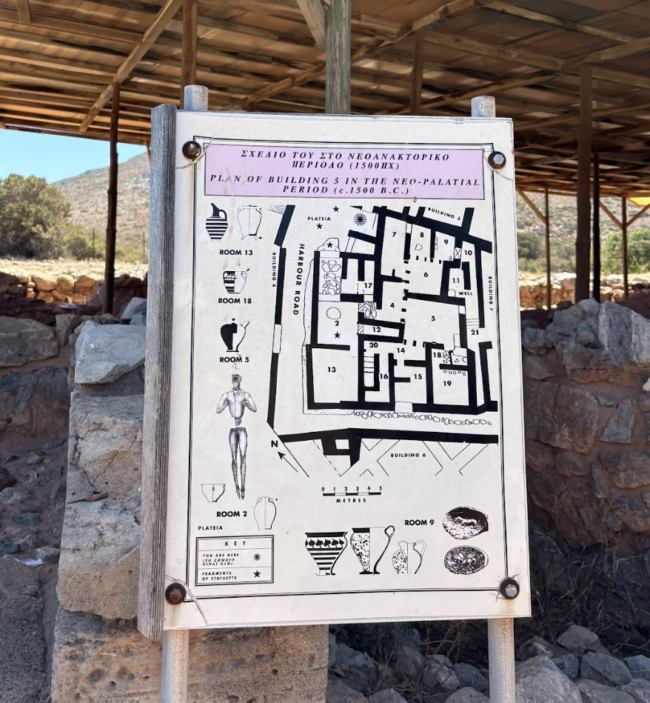Classical antiquity has fascinated me since elementary school. Like many young readers, I was captivated by Rick Riordan’s Greek gods and goddesses in the “Percy Jackson” novels and soon continued on to similar series, such as Caroline Lawrence’s “The Roman Mysteries.” My family encouraged my curiosity. When I visited Italy with my grandparents, I asked if we could visit the ancient port town of Ostia, outside of Rome. Though “The Roman Mysteries” is fictional, it is historically accurate and set in Ostia. Walking through the archaeological site, I could easily imagine the city I had read about. The artifacts we observed had been crafted by artisans with specialized roles in a once-thriving society. Their surviving works transformed a distant detail in a book into a tangible civilization. Experiences such as these galvanized me to continue pursuing my interest in history – off the page.
This past spring, I interned at the Metropolitan Museum of Art in the Department of Greek and Roman Art. Immersing myself in the collection, exploring the library and engaging with curators allowed me to gain a better understanding not only of antiquity, but how museums today operate. I attended luncheons with donors, meetings on the conservation process, gallery tours, presentations by visiting scholars and read correspondence about loans and acquisitions. For my own capstone project, I researched, designed and delivered a tour of the collection. Although he wasn’t my supervisor, I also befriended a curator, Sandy, who mentioned he would be visiting Crete in August.
Coincidentally, my family would be there at the same time. This summer, I was fortunate to take a whirlwind trip to Greece. We began in Athens with the Acropolis Museum, the National Archaeological Museum and the Cycladic Museum, as well as sites like the Roman Agora, the Temple of Zeus and the Acropolis. We flew to Crete and visited archaeological museums in Heraklion and Chania, as well as Knossos Palace. After we returned to the mainland, we continued on to the Temples of Poseidon, Artemis and finally Apollo in Delphi, as well as the ruins of Olympia, Mystras and Corinth.
The highlight of the trip, however, was reuniting with Sandy. We crossed Crete to meet him at the Sitia Archaeological Museum, which houses mostly Minoan-era artifacts. In the cool museum interior, Sandy led us through the works that he had uncovered with a team several decades ago. Central to the collection was a Minoan statuette of a male figure crafted from gold, hippopotamus tooth, serpentine and rock crystal. It had been smashed against a doorway when the shrine was pillaged. It was then burned and fragmented into hundreds of pieces before it was discovered and meticulously reconstructed. Sandy explained how it indicates a direct Minoan connection with Egypt during the Bronze Age, as well as the Minoan worship of cult image that may have originally been the tutelary deity at a local mountain shrine. This image later took on Egyptian features.
We drove a little further down the coast to the Palaikastro Archaeological Site, located only a few hundred yards inland from the Aegean Sea. At first glance, it appeared to be a barren field with a simple roof structure and a dozen or so stone-lined areas. However, Sandy described the significance of each room, pointing out where the statuette fragments had been found. He detailed adventures and jokes exchanged during the excavation, as well as his own theories about the history of the site. As he spoke, the delight of the excavation and the culture that may have once existed in the palace unfolded before us. Afterwards, we had lunch at a seaside taverna adjacent to the site and met Sandy’s son and his friend, both film students living in Athens. The main course was a delicious branzino (whose eyeball I ate on a dare). Before we left, Sandy suggested that I participate in a future archaeological dig to gain more material experience with artifacts.
His suggestion appealed to me: Though history is taught primarily through books and classroom discussions, in many ways, its study cannot be detached from its physical form. Observed alone, most ancient sites would appear to be nothing more than rocks and rubble, but understanding their historical background situates them in the social and political context of their age. At the same time, factual knowledge of an era is enriched by contact with tangible aspects of culture. I am grateful that I had the opportunity to visit Greece and even more excited that I could supplement these travels with foundational knowledge about ancient life.






